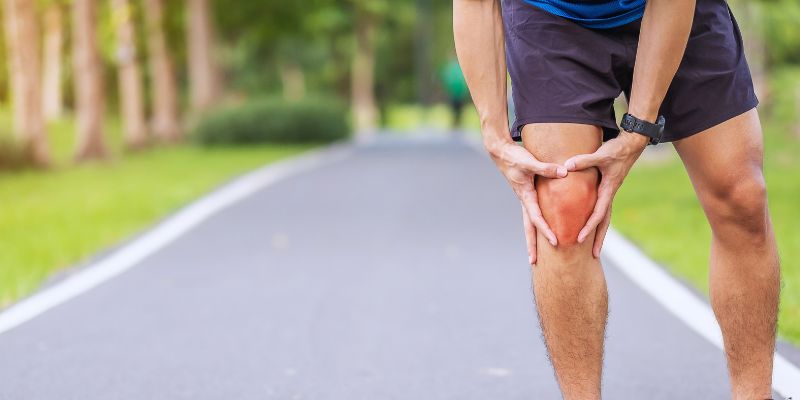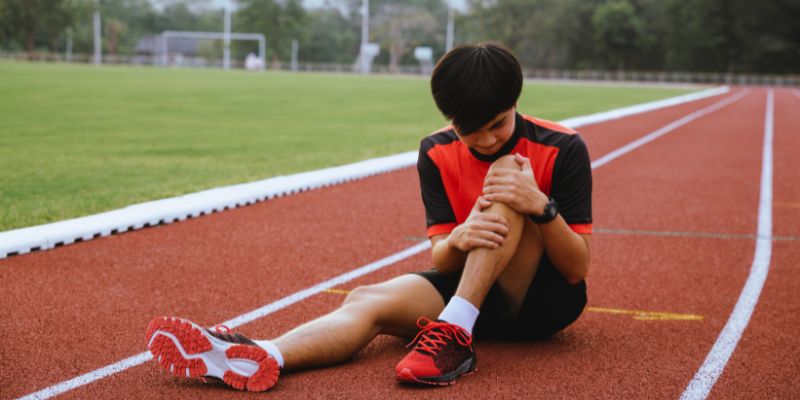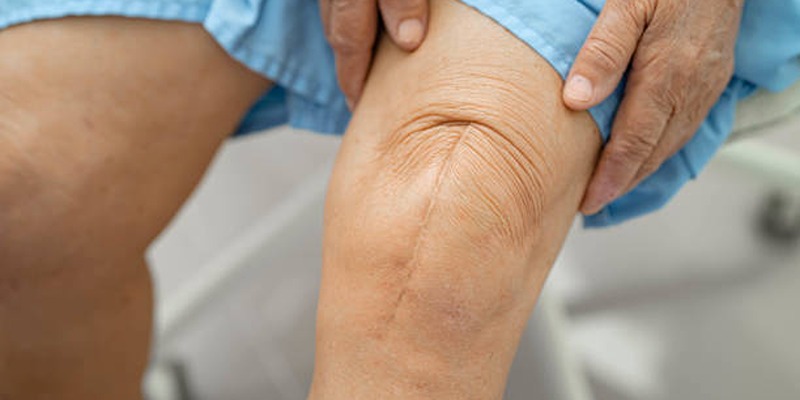Taking the Pain Out of Runner's Knee: Proven Strategies for Relief
The runner's knee commonly affects athletes and runners, sometimes known as patellofemoral pain syndrome. It makes daily tasks painful either around or behind the kneecap. Often, the cause of this disorder is weak muscles, poor running form, or overuse. Ignoring the signs could cause ongoing issues and restrict your movement.
The good news is that runners' knees can be corrected. The right strategy will help you avoid more damage and ease suffering. Recovery depends much on rest, strengthening activities, and appropriate shoes. This article examines natural ways to control and stop runners' knees. These ideas will keep you active and pain-free regardless of your running experience or ability level. Let's dig in and eliminate runners' knees' agony!

Know Runner's Knee
Stress to the knee joint causes the runner's knee. Often, it results from overuse, incorrect shoes, or weak muscles. The pain usually starts either behind or around the kneecap. Simple activities like sitting for too long or climbing stairs could be damaging.
Misaligned kneecaps and bad running form are further factors. Running repeatedly aggravates the issue, which can become chronic and more difficult to control if untreated. Treatment depends on a knowledge of the core cause. If the discomfort is great, see a doctor. Early diagnosis helps prevent long-term damage and speed recovery. Healing starts with you learning the messages your body sends.
Common Symptoms of Runner's Knee
Early recognition of symptoms facilitates appropriate management. The main complaint is kneecap pain. It gets worse during strenuous pursuits like squatting or jogging. Bending your knee could cause grinding feelings. Common symptoms also include pain and swelling. Sometimes, knee movement is limited by stiffness.
One additional obvious sign is pain following extended periods of sitting. The "theater sign" is this. It occurs when the knee stays bent, stressing the joint. Ignoring these manifestations might cause problems. Early on, intervention stops more damage. If discomfort continues, get medical help to prevent aggravating the problem.
Proven Strategies for Pain Relief
Here are some of the prevention strategies for pain relief:
- Rest and Recovery: Give your knees some time. Healing of injured tissues depends on rest. Steer clear of high-impact or running during rehabilitation. To lower swelling, raise your leg and apply ice packs. Every few hours, fifteen minutes of ice works great. Another kind of assistance is compression bandages. Breaks help avoid additional strain. Your knees need time to heal and gain strength again. Resting allows you to investigate low-impact sports like swimming.
- Proper Footwear: Choosing appropriate shoes helps to ease knee strain. Choose running shoes with decent cushioning and arch support. Ill-fitting shoes aggravate knee issues. Change tired-out shoes often to prevent problems. Additionally, orthotics help your knees and feet line correctly. Maintaining correct running form depends much on footwear. To save your joints, make investments in premium shoes.
Exercises to Strengthen Knees
Below are some of the exercises that strengthen the knees:
- Quadriceps and Hamstring Strengthening: A runner's knee often results from weak muscles surrounding the knee. Exercise strengthening helps to lower discomfort and increase joint stability. Lunges, step-ups, and leg presses work the quadriceps. Hamstring stretching increases flexibility and helps to avoid stiffness. Important is consistency. Two to three times a week, perform these workouts. Start slow, then progressively raise the intensity.
- Foam Rolling and Stretches: Rolling foam releases muscle tension. Pay especially attention to your calves, quads, and IT bands. It eases stiffness and increases blood flow. Furthermore, avoiding tightness involves stretching your hip flexors and calves. Yoga poses, including the pigeon pose, are effective for flexibility. Together, strengthening and stretching offer long-term relief. Regular exercise helps your knees to be pain-free.
Maintaining a Proper Running Form and Balanced Diet
Good running technique avoids damage. Warm up always before starting to run. A vigorous warm-up stretches your joints and muscles for action. Straight your back and loosen your shoulders. Steer clear of overstriding to save the knees from undue strain. Try shorter, faster steps instead. To lessen the impact, gently ground yourself. Pay attention to your body. If you have discomfort, stop and relax. Correct form lowers the chance of recurrent knee problems.
A balanced diet facilitates healing. Add meals with anti-inflammatory agents, including almonds, leafy greens, and fatty salmon—omega-3 fatty acids lower joint inflammation. Calcium and vitamin D build bones. Good sources are eggs, dairy goods, and fortified cereals. Moreover, hydration is important for joint health. Stay hydrated enough to maintain lubrication of your cartilage. Nutrition accelerates recovery and balances your course of therapy.

Preventing Runner's Knee in the Future
Better still than treatment is preventative action. Run at progressively higher intensity over time. Steer clear of sharp speed or distance fluctuations. Frequent strengthening of your legs and core will help. Strong muscles help to absorb impact better. Invest in appropriate shoes and replace them as necessary. During long runs, pause occasionally. Pay attention to your body; never discount suffering. Additionally, stretching following runs helps to avoid stiffness. A few steps will help you to remain pain-free while running.
Developing good habits helps to save your knees. See a doctor or physical therapist if discomfort lingers despite your care. They can suggest particular treatments and point to underlying reasons. Severe cases could call for imaging testing, including X-rays or MRIs. Sessions of physical therapy center on customized activities. These work on weak areas and increase knee stability. Ignoring the issue will aggravate your situation. Get quick assistance to improve results. A specialist guarantees the correct treatment for you.
Conclusion:
A runner's knee need not keep you back. Little actions like relaxation, strengthening exercises, and correct shoe wear can tremendously impact. Keeping a balanced diet and running with appropriate technique also helps to guard your knees. If agony persists, don't hesitate to get expert advice. Early action speeds up recovery and helps to avoid long-term damage. Pay attention to your body and, when necessary, adjust. These actions will help you to lessen suffering and enable you to resume running boldly. Maintaining pain-free and active depends much on prevention and care.












